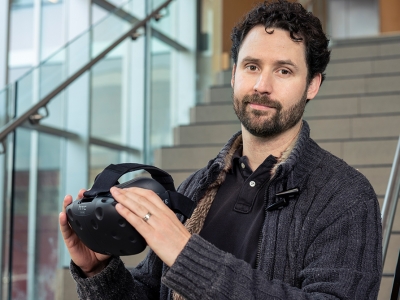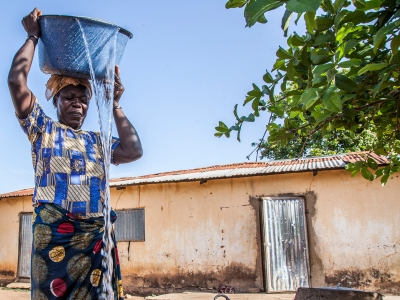By Joseph Mathieu
Dinner in the Street, a recently released handbook from the Azrieli School of Architecture & Urbanism, isn’t just forward-thinking — it’s a report on the future.
Created with the help of recent Master of Architecture graduates Shelby Hagerman and Rehab Salama, Dinner in the Street: Dining Safely and Socially in the Pandemic City and Beyond offers pandemic-safe solutions for the restaurant industry that also enhance public life in Ottawa.
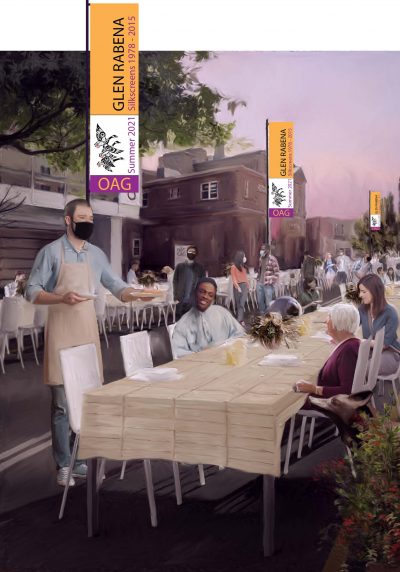 It proposes fundraising dinners and plush animals as dining companions, winterized dining cabins and city blocks gone to seed, and many updates to public spaces. Each imagined solution comes with detailed technological elements ranging from simple (trees in planters on wheels) to sophisticated (server drones modeled on Canadian bird species). While the latter may seem fanciful, its designs were based on real drones used at the Edmonton airport to keep birds away from aircraft.
It proposes fundraising dinners and plush animals as dining companions, winterized dining cabins and city blocks gone to seed, and many updates to public spaces. Each imagined solution comes with detailed technological elements ranging from simple (trees in planters on wheels) to sophisticated (server drones modeled on Canadian bird species). While the latter may seem fanciful, its designs were based on real drones used at the Edmonton airport to keep birds away from aircraft.
“The goal of Dinner in the Street is to use our resilience during the crisis of 2020 to advocate for more long-term policies that will enhance the post-pandemic city,” states the report.
Architecture professor and former Director of the Azrieli School of Architecture & Urbanism Jill Stoner approached Hagerman and Salama to collaborate because she knew their skillsets would complement the other’s.
Hagerman led the research agenda and organized the community interaction with local restaurant owners and neighbourhood association heads. Stoner sketched designs which Salama brought to life in digital models and renderings.
“Rehab transformed ideas into magical imagery, showing Ottawa streets as they would actually look, populated with people at a certain time of evening, during a certain season,” says Stoner.
The MITACS Accelerate Grant Program, which opened a research category for COVID-19-related projects last spring and is partly funded by the private sector, offered to pay 75 per cent of the funding towards developing the handbook, while Carleton alumni Roderick Lahey of Roderick Lahey Architects and Hugh Gorman of Colonnade Bridgeport Developers sponsored the rest.
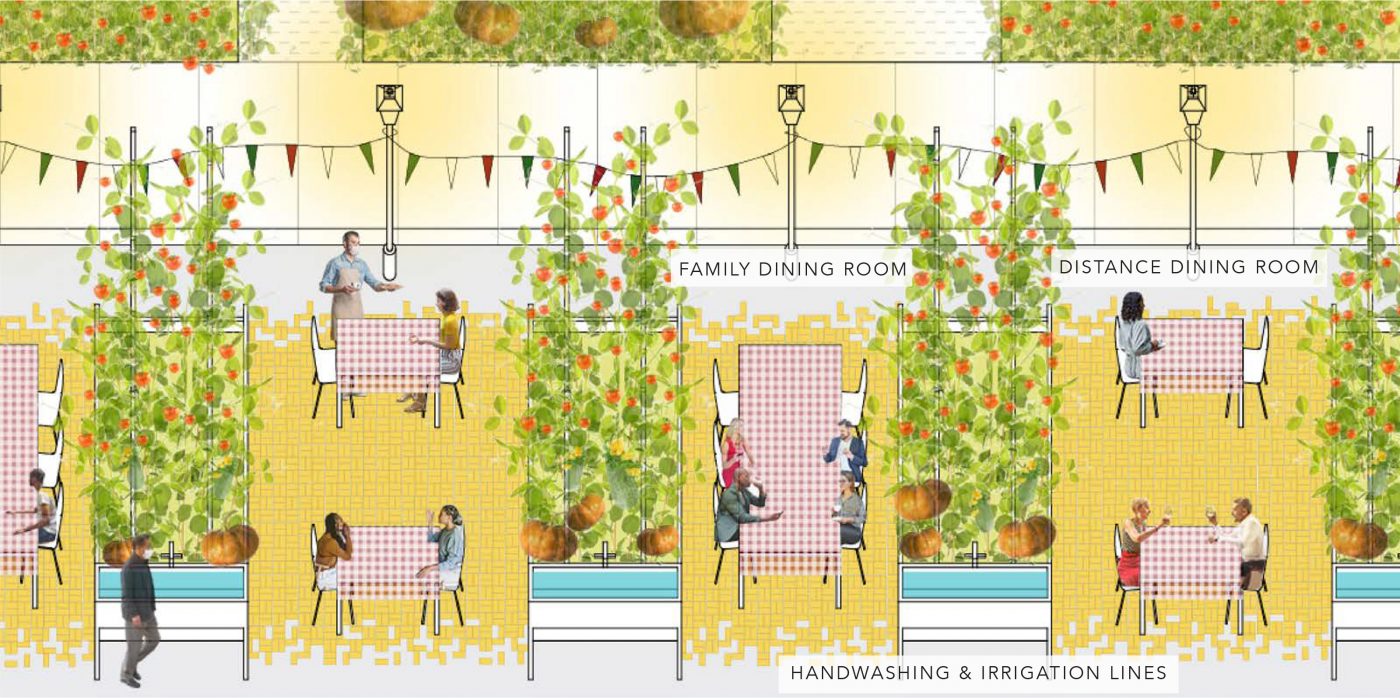
Imagining What Could Be
Its solutions address in detail five different neighborhoods in Ottawa with their own unique scenarios. The project also considered Beechwood Avenue in Vanier; Rue Laval, Rue Kent and Rue Aubry in Hull and various areas of Sawmill Creek, Kanata and Orleans for their report.
The handbook suggests George and York Streets could be regularly closed to traffic to set up dining tables that would be fed by ByWard Market restaurants. Argyle and Daly Avenues could close for regular benefit dinners and weekly communal feasts that could seat up to 500 people. Patterns either paved or painted onto streets would facilitate physical distancing when needed and serve as a reminder of 2020.
If Hazel Street, in Old Ottawa East, was partly planted as a wheat field, the neighbouring Green Door Restaurant & Bakery could create a solo dining experience for individual diners. Inspired by the whimsical “Table for One” in Ransäter, Sweden, where meals are delivered by a basket on a clothesline, the menu could include a selection of books to read while dining.
As there is precedent in Little Italy to shut down the streets for community events, the cul-de-sacs off Preston Street could join in the tradition by reducing the width of their traffic lane and developing community gardens that double as dining rooms.
In April 2020, an Amsterdam restaurant created glass dining cabins to keep their customers physically distanced while dining. These inspired Stoner and Salama to devise Ottawa versions with thermal curtains to retain heat, solar panels for electricity and a sliding board to serve food from a safe distance. These “winter cabins” are also designed to be mobile so they can support many different communities over a season.
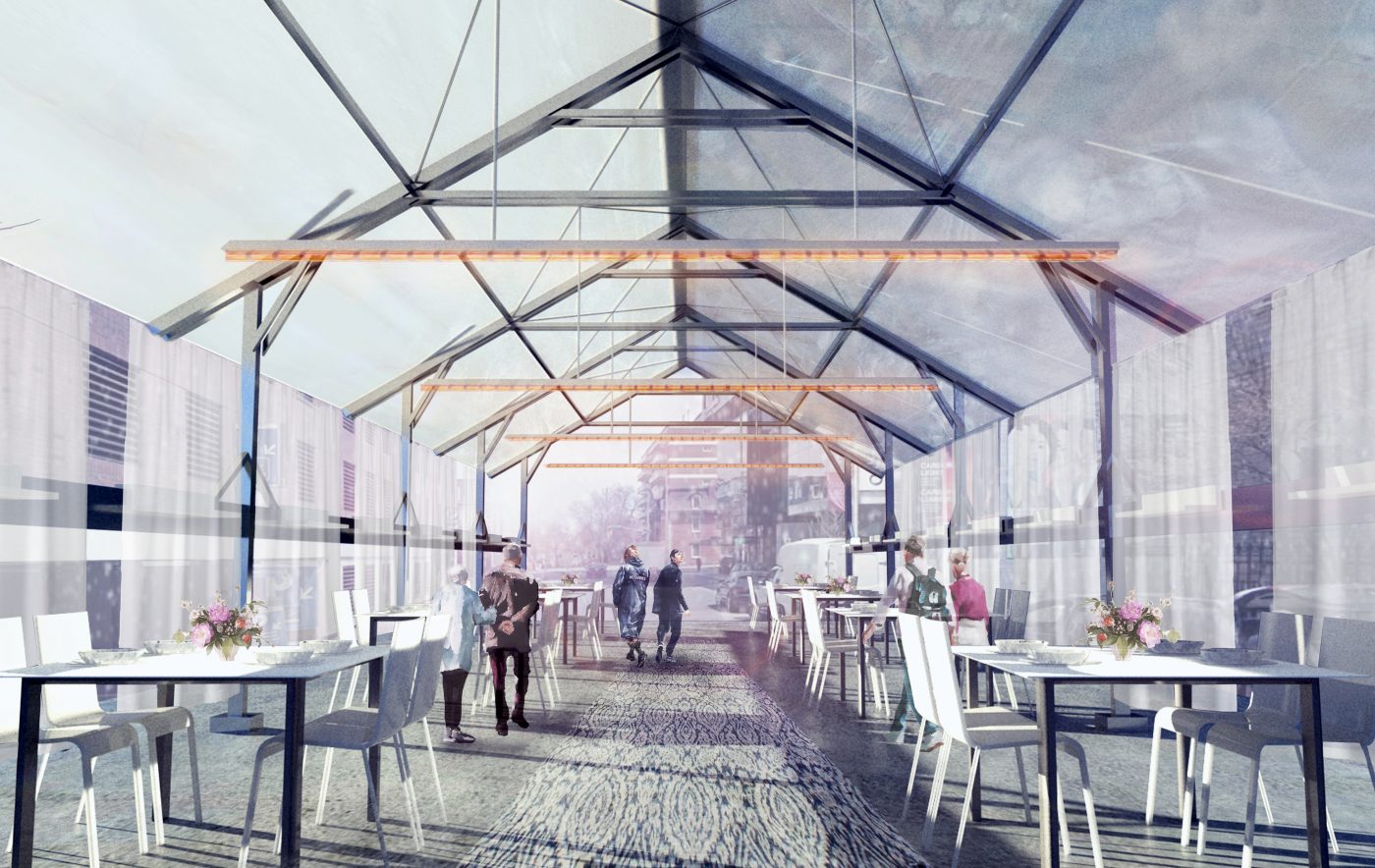
“Dinner in the Street turns the challenging pandemic scenario into an opportunity for safe and much needed social interaction,” says Prof. Federica Goffi, who was named as Interim Director of the Azrieli School of Architecture & Urbanism this past July.
“The project offers a real sense of hopefulness and a path toward a return to public life that promises to reconnect the social fabric of the city.”
Dinners in Many Streets
Although the pandemic was the catalyst of the project, dinners in the street have interested Stoner ever since she visited Siena, Italy over 30 years ago.
“The whole city of Siena, built around the Piazza del Campo, was devised as a work of art that blends into the surrounding landscape,” reads its UNESCO World Heritage Centre site description. The citizens of its 17 contrade (districts) meet in the famous Piazza every July and August for the famous Palio di Siena, in which 10 of the city’s districts champion a horse and its bareback jockey.
The event culminates in late-night neighbourhood dinners made in community kitchens and served on long tables that wind through the city’s medieval streets as far as the eye can see.
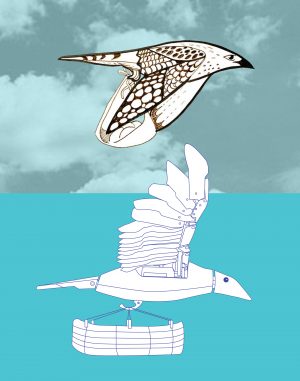
Dinner in the Street imagines solutions with detailed technological elements, such as server drones modeled on Canadian bird species, based on real drones at Edmonton International Airport used to keep birds away from aircraft.
Stoner had the privilege of attending the Siena dinner in 1989 while she was a professor of architecture at UC Berkeley. She and her seven-year-old daughter lived in the Chiocciola contrada (the snail district) while she taught at an international architecture summer institute.
“Our horse did not win the Palio race that year,” she wrote in the report, “but the dinner in the street experience became an indelible memory… and has influenced the way that [we] share meals with family, friends and neighbours.”
When Stoner became director of the Azrieli School of Architecture & Urbanism in 2016, she began a tradition of honouring the graduate students with their very own dinner in the street.
“The Architecture Building basically has a street on its main floor,” says Stoner. “It’s indoors but nevertheless was conceived by its architects as a street.”
The annual event presented a single, long table down the lobby of the building, with red chairs stretched the length of it, and 100 people served a five-course meal. Since the start of the pandemic, the School’s event has gone online: last April, on Zoom, graduates and faculty shared a virtual meal prepared and delivered by local caterer Epicuria.
Stoner wrote the handbook’s proposal in April 2020, the month when the School’s dinner in the street regularly took place. It was a difficult time when so many regular events had to be cancelled, but that didn’t keep Stoner and her students from thinking ahead.
“It was a kind of catharsis in a way, to think about how this practice could become as big as the City itself.”
Friday, September 3, 2021 in Architecture, COVID-19, Experiential Learning, Feature Stories, Graduate, Research
Share: Twitter, Facebook
